War Scars
Bosnia and Herzegovina
Bosnia and Herzegovina
War wounds are not easy to heal. This is true for men as for things. In Bosnia and Herzegovina the signs of war are still visible in the streets, in homes and in people's eyes, ready to remind us how slow and difficult is the return to peace.
On 21 November 1995, three signatures put an end to the war in former Yugoslavia with the Dayton Agreement, which formally closed the hostilities of the Civil War.
18 years after the end of the conflict, the dream of a unified country is still far away, and the promises of the Agreement have not been kept.
The war refugees, who had been assured the right to a home, are still forced to live in containers or partially destroyed buildings. the city of Srebrenica, sadly famous for the 1995's massacre of 8000 Bosnian Muslims by the General Mladic's troops, is only one of the many places where the war consequences are clearly evident. The refugee camp of "Baratova" and the dilapidated Hotel Domavia still hosts tens of families in critical conditions. UNHCR estimate 112,802 (2012) persons are still internally displaced.
Meanwhile, the ICMP (International Commission on Missing Persons) still works to identify missing persons. In Tuzla, a hundred kilometers from Sarajevo, there are storage facilities where the skeletal remains and personal belongings of the victims found in mass graves are stored, collected and analyzed. According to ICMP , at the end of the conflicts in the former Yugoslavia, 40,000 people were missing, presumed dead.
So far, in Bosnia and Herzegovina, about 10.000 people are still missing.
New generations hope to enter, one day, in the European Union, but peace still seems fragile and politicians do not seem to have any will to give up their power for a strong and united country.
On 21 November 1995, three signatures put an end to the war in former Yugoslavia with the Dayton Agreement, which formally closed the hostilities of the Civil War.
18 years after the end of the conflict, the dream of a unified country is still far away, and the promises of the Agreement have not been kept.
The war refugees, who had been assured the right to a home, are still forced to live in containers or partially destroyed buildings. the city of Srebrenica, sadly famous for the 1995's massacre of 8000 Bosnian Muslims by the General Mladic's troops, is only one of the many places where the war consequences are clearly evident. The refugee camp of "Baratova" and the dilapidated Hotel Domavia still hosts tens of families in critical conditions. UNHCR estimate 112,802 (2012) persons are still internally displaced.
Meanwhile, the ICMP (International Commission on Missing Persons) still works to identify missing persons. In Tuzla, a hundred kilometers from Sarajevo, there are storage facilities where the skeletal remains and personal belongings of the victims found in mass graves are stored, collected and analyzed. According to ICMP , at the end of the conflicts in the former Yugoslavia, 40,000 people were missing, presumed dead.
So far, in Bosnia and Herzegovina, about 10.000 people are still missing.
New generations hope to enter, one day, in the European Union, but peace still seems fragile and politicians do not seem to have any will to give up their power for a strong and united country.
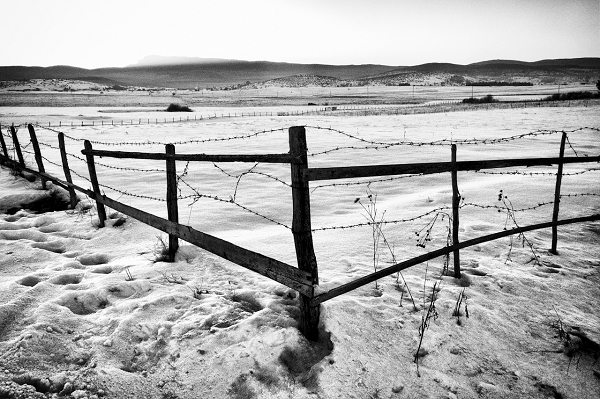
The lowland of Romanija in Srpska Republik on the way between Sarajevo and the town of Rogatica

A young mother lives with her 10 years old son in the refugee camp of Rogatica. Her son's dream is to play in the local soccer team but he suffers of a defect to his foot and she doesn't have the money to cure him. The Health Board provides free medical care, but the resources are very limited

The remains of a building on one of the hills surrounding Sarajevo
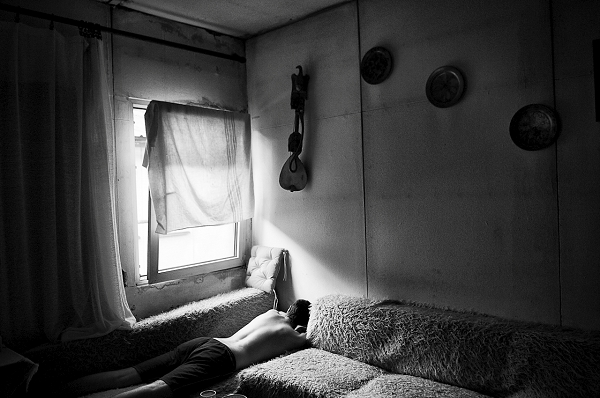
A young boy who lives with his grandmother, in one of the German made containers TMG4, in the refugee camp "Baratova" on the outskirts of Srebrenica. Most of them live with little hope of improvement as there is almost no chance of finding a job. Most of their homes were destroyed and the government has no funds to provide new homes for all refugees.

Excavation of a mass grave in Slasenica, an area near Srebrenica. This area is located in a field that was used as a dump after the war. In order to find bone fragments, Matthew Vennemeyer, an anthropologist at the ICMP (International Commission on Missing Persons) and his collaborators have to dig through six feet of garbage
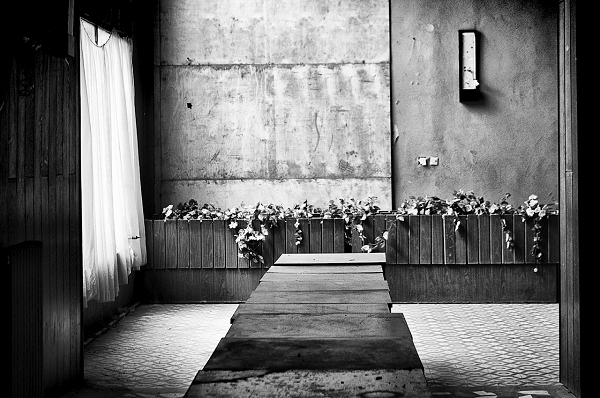
the Hotel Domavia, a run-down hotel in Srebrenica, once used as a base for Bosnian Serb army and then by the United Nations. Today there are about fifteen families, mostly elderly, in critical condition. The complex has already been purchased by a real estate group that is planning to renovate the structure turning it into a hotel for tourists visiting the nearby hot springs of Mount Guber. Is still not known what will happen to the people living in the property.

Family members mourning over their relative's coffins in Potochari memorial center for the victims of Srebrenica's genocide. In 2010, more than 50,000 people attended the mass burial of 775 bodies in Potocari.

An ID card found in a mass grave. These personal belongings are cataloged and stored in the structure of the ICMP in Tuzla. These, together with the DNA analysis are fundamental to restore a name and bury the remains of the victims that continue to emerge from the soil of this land

People in Potocari assisting while the coffins of the victims of Srebrenica are being placed inside the hangar before the mass burial

Mostar, the Ljubljanksa Banka building. This bank, located on the front line of Mostar, during the war was used by the snipers as a nest.

The coffins containing the remains of victims of the Srebrenica massacre arrive to the memorial center in Potocari by trucks coming from Sarajevo

An ICMP technician works to reassemble body parts found in mass graves. By analyzing the DNA of the bones compared with the relatives of the victims they are able to give an identity to the remains of the victims. Often parts of the same body are found in different mass graves hundreds of kilometers away from each other

Like every 11th of the month the "Mothers of Srebrenica" parade through the streets of Tuzla to remember their loved ones who died during the genocide of 1995

Muslim cemetery on a hill surronuding Sarajevo

Man walking in Baščaršija, the old city center of Sarajevo

The signs of mortar fire on a building hit during the war in the town of Olovo, on the road between Sarajevo and Srebrenica
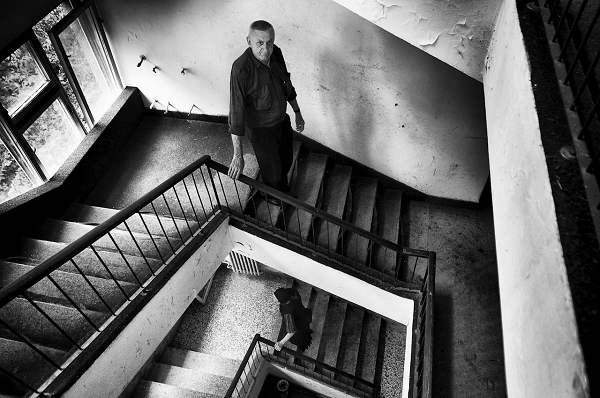
Dusan Jovicic (62) a former Serbian soldier. During the war, a bomb destroyed his home in Vlasenica, killing his 13 year old son. His wife died of a heart attack three years ago. He lives inside the Hotel Domavia, a run-down hotel in Srebrenica, once used as a base for Bosnian Serb army and then by the United Nations. Today there are about fifteen families, mostly elderly, in critical condition. The complex has already been purchased by a real estate group that is planning to renovate the structure turning it into a hotel for tourists visiting the nearby hot springs of Mount Guber. Is still not known what will happen to the people living in the property.
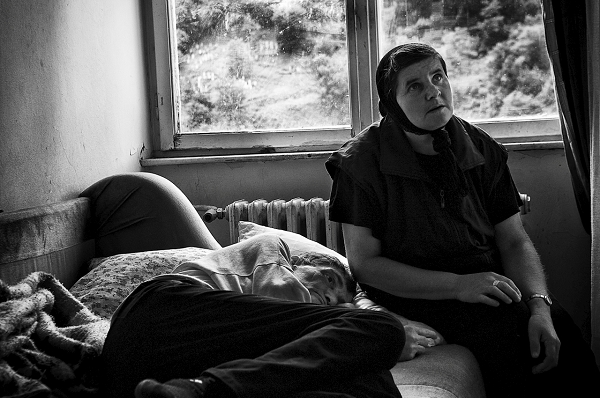
Zivana Vasic, 53, with her husband Stojan, 62 live inside the run-down hotel Domavia, in Srebrenica. Stojan is almost completely paralyzed can barely move his hands and face. "He has spinal problems, but his brain and heart are in perfect shape. If receive the proper medical care, could run now" Says Zivana. The Health Board provides free medical care, but the resources are so limited and there are only few doctors that can not guarantee home visits
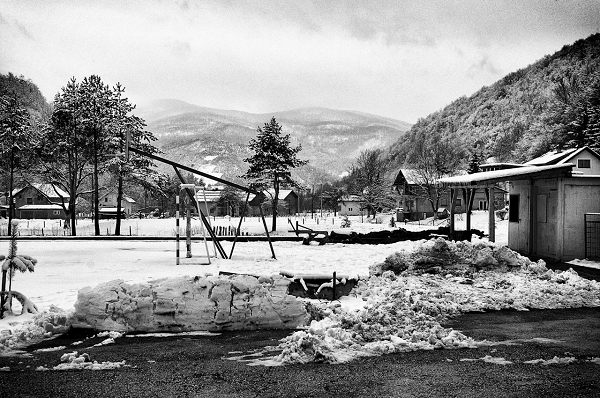
During the first 15 months of the war in Bosnia and Herzegovina, the city of Fojnica was regarded as an exceptional case, as declared by the United Nations General P. Morillon "an oasis of peace." In July 1993, the Bosnian army pushed out the Croatian forces out of Fojnica unleashing a violent conflict on the streets, and much of the city was set on fire

